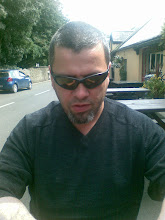Martin quotes from an very intersting Ericson report that gives a insight in the technology & businesscase in rural 3G/WCDMA deployments.
I'll quote and link:
One part of the document deals with the technical background information on the WCDMA 850 MHz network deployment by Telstra in Australia. The paper describes how different factors such as antenna types and configuration of base stations, indoor and outdoor directional antennas at customer sites influence both the coverage area of a base station and throughput per user at the cell edge. Ericsson says in the paper that the typical rural 3G cell in the Australian outback has a cell radius of 60 km. Indirectly, they also mention in that for this scenario the land needs to be flat, the radio tower needs to be very high and directional outdoor antennas are required at the subscriber's home. Note: Telstra's got a coverage map online here, type in 6450 as postal code to get started)
Another part of the document deals with a business case for a 3G network generally and for rural deployment specifically. They base their calculation on a network with an average rural cell radius of 12 km and 15 inhabitants per square kilometer. Some noteworthy figures:
* CAPEX for upgrade of an existing GSM site to 3G: € 240.000. I assume this is the price of the base station plus site preparation, installation, etc.
* For their calculation they use a voice telephony ARPU (average revenue per user) of €15.- a month, €3.- a month per subscriber for mobile data and €1.- a month per subscriber for mobile TV. In addition 40% of the subscribers use the network for broadband Internet access as ADSL is not available.
With those numbers, Ericsson calculates that the cell generates €212.184 a year in voice, mobile handset data and mobile TV revenues. Broadband internet adds another €132.000 to that. A clear statement that data revenues are strong but the main revenue is still made with mobile handset voice and data applications. With a 6 year deprecation and annual OPEX costs of €40.000 of the cell, Ericsson estimates the cost of the cell to be around €80.000 a year which translates into a gross margin of the site to 75%.
You can download the full report here.
All very interesting information seeing that the deployment of 3G networks is far ahead of Wimax or other wireless broadband technologies. The current spate of 3G offerings by the likes of Vodafone, 3, KPN etc. shows that some of the larger operators have decided to attempt to recoup their investments in 3G licenses and infra-structure rather than jump on the Wimax bandwagon.
E.



No comments:
Post a Comment